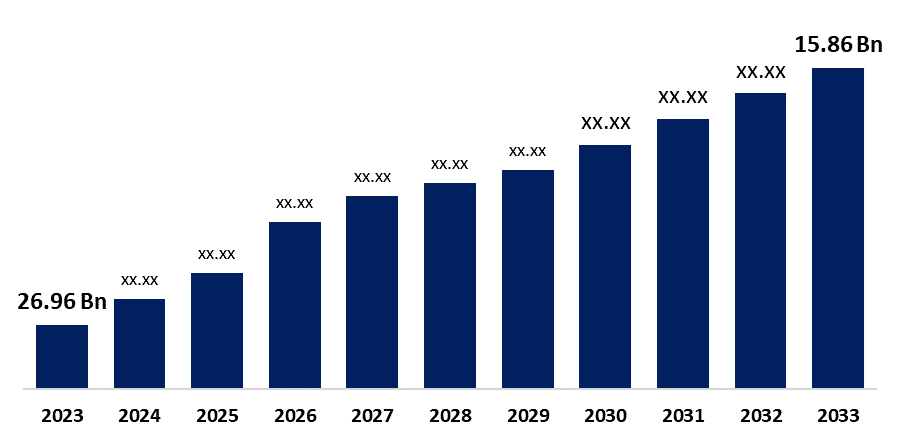📑 Table of Contents
The global Business SMS market, under the broader umbrella of Internet, Communication, and Technology, is poised for robust growth from 2025 through 2032, according to recent research by Market Research Intellect. This upward trajectory is being shaped by multiple factors, including technological progress, evolving consumer communication preferences, and the growing demand for real-time, personalized messaging.
Market Overview
SMS continues to dominate as a critical tool in business communication—especially across industries like retail, finance, healthcare, and logistics. As companies prioritize direct, cost-effective, and immediate engagement methods, SMS stands out for its reliability, high open rates, and broad mobile reach. Its use cases have expanded far beyond simple marketing. Today, businesses rely on SMS for transactional updates, appointment reminders, customer support, security alerts, and two-factor authentication (2FA). The result is a surge in adoption, fueled by the global boom in smartphone usage and the need for real-time interactions.
The Business SMS market is not just expanding; it’s transforming. As more businesses integrate SMS into their omnichannel strategies, it becomes a cornerstone of retention, automation, and customer lifecycle management. Integration with digital platforms, AI-driven personalization, and automation workflows are pushing the boundaries of what SMS can achieve. As long as businesses aim to enhance user trust, streamline operations, and reduce friction in communication, demand for SMS will continue to rise.
Market Growth Drivers
Several key factors are driving the growth of the global Business SMS market:
- Digital Transformation: Companies are embracing AI, automation, and IoT to make communication smarter and more contextual.
- Expanding Industry Adoption: Sectors like healthcare, retail, tourism, and logistics are embedding SMS into core workflows.
- Security Use Cases: SMS remains essential for 2FA and fraud alerts, especially in fintech and e-commerce.
- Omnichannel Communication: SMS plays a vital role alongside email, social media, and in-app messaging for customer engagement.
- Rising Mobile Penetration: With smartphones now ubiquitous, SMS offers universal reach across demographics and regions.
- Affordability and Speed: Compared to other channels, SMS is cost-effective and delivers near-instant results.
- Government and Industry Support: Regulations are evolving to support safer, more reliable digital communications.
Innovations in R&D, combined with favorable policies and increased investment from global players, are expanding the boundaries of Business SMS applications.
Challenges and Market Constraints
Despite its advantages, the Business SMS market faces notable headwinds:
- High Initial Costs: For SMEs, the investment in compliance and tech stack can be significant.
- Regulatory Complexity: Data privacy laws, opt-in requirements, and carrier regulations vary across regions.
- Supply Chain Disruptions: Global logistics and material sourcing issues can limit SMS platform capabilities or drive up costs.
- Market Saturation: In mature markets like North America and Western Europe, competition is fierce, and growth may slow.
- Intense Competition: New startups and established players battle for market share, putting pressure on pricing and innovation.
- Economic Volatility: Geopolitical instability, inflation, and changing consumer behavior can all affect adoption rates and ROI.
To remain competitive, companies must focus on innovation, agility, and alignment with evolving consumer expectations.
Emerging Trends Reshaping the Market

The Business SMS landscape is rapidly evolving, with several transformative trends gaining momentum:
- AI & Automation: From smart segmentation to predictive engagement, AI is making SMS campaigns more precise and personalized.
- Sustainable Messaging: Eco-conscious initiatives and paperless workflows are increasing demand for SMS as a low-impact solution.
- Personalization at Scale: Tailored content, dynamic product recommendations, and localized offers are redefining engagement.
- Cloud Integration: Cloud-based platforms offer scalability, reliability, and better data management.
- R&D Investment: Companies are pouring resources into new technologies that enhance messaging performance and security.
- Global Expansion: Emerging markets in Asia-Pacific, Latin America, and Africa are becoming hotspots for SMS growth.
- Cross-Channel Campaigns: SMS is increasingly part of broader omnichannel strategies including email, social media, and apps.
These trends suggest the Business SMS market will remain dynamic, adaptive, and primed for sustained innovation.
Competitive Landscape
The Business SMS market is highly competitive, shaped by a mix of global players, regional providers, and agile startups. Key strategies include:
- Product Differentiation: Innovation in delivery speed, analytics, and personalization gives companies a competitive edge.
- Strategic Partnerships & M&A: Collaborations and acquisitions help companies expand geographically and technologically.
- Compliance and Trust: Businesses that prioritize data privacy, opt-in systems, and ethical marketing build stronger brand loyalty.
- Global Reach with Local Expertise: Companies are tailoring their offerings to meet regional compliance and language needs.
- Technology Integration: AI, machine learning, and automation are now baseline expectations in most enterprise-level solutions.
Leading market players include Twilio, Syniverse Technologies, Nexmo, Infobip, SAP Mobile Services, OpenMarket, CLX Communications, and others. Startups like Dexatel and ThinQ are disrupting with fresh, flexible approaches and often more attractive pricing models.
Regional Outlook
The market exhibits diverse growth patterns across regions:
- North America: Leading in adoption thanks to mature infrastructure, advanced tech, and high mobile usage.
- Europe: Driven by strong data protection laws, innovation in customer service, and emphasis on sustainability.
- Asia-Pacific: Fastest growing region, with surging demand from China, India, and Southeast Asia due to digital transformation and mobile-first consumer bases.
- Latin America & MEA: Emerging markets with huge potential, though hindered at times by regulatory uncertainty and economic constraints.

Final Thoughts
The Business SMS market from 2025 to 2032 is set to thrive, driven by demand for reliable, real-time, and secure communication. As technology advances and businesses race to meet evolving consumer expectations, SMS will remain a critical piece of the customer engagement puzzle.
Companies that invest in AI, automation, and integrated communication ecosystems will unlock higher customer retention, operational efficiency, and long-term value. For stakeholders, from tech providers to end-user industries, the Business SMS market offers substantial opportunities—and those who move early will likely reap the biggest rewards.
